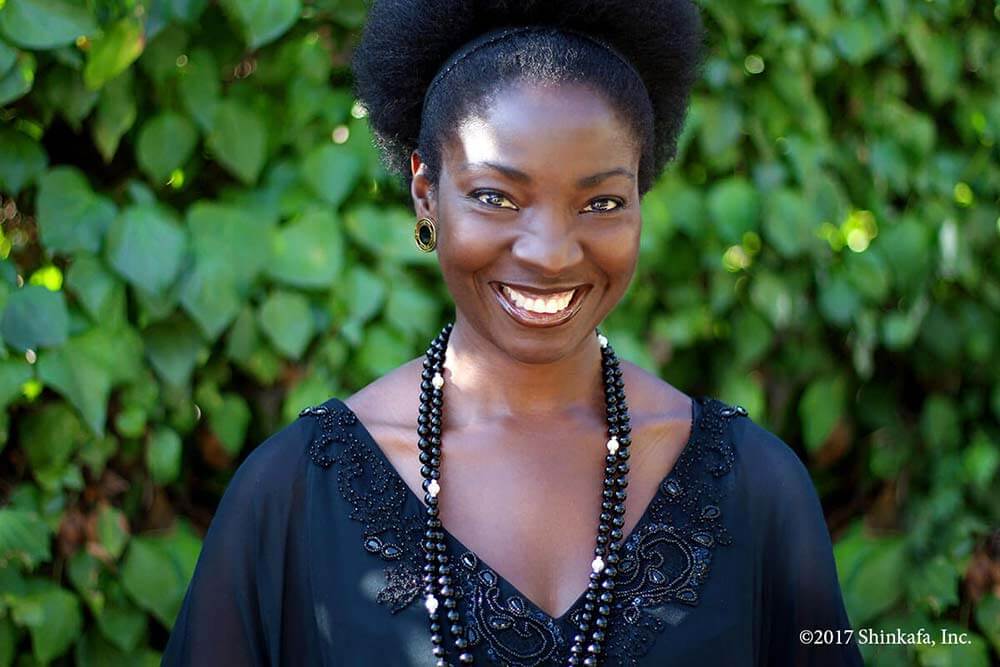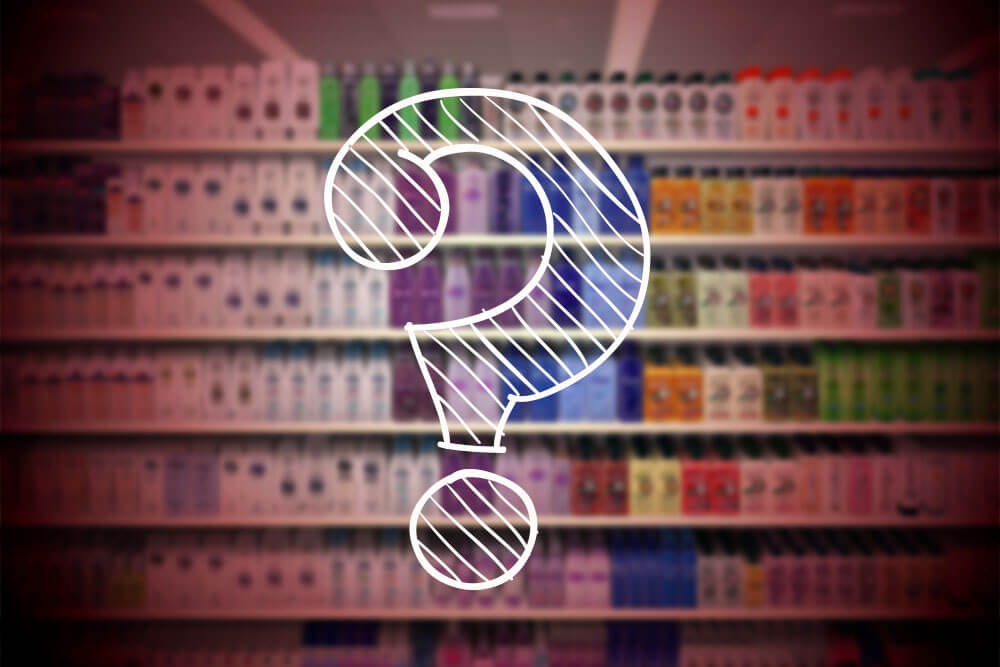
By Ngozi Bolin, Founder, Shinkafa Inc.
Do You know what’s in your products? I mean REALLY in your products?
Did you know that a lot of beauty, skincare, and haircare products actually do more harm than good? I, however, believe in the Hippocratic Oath to do no harm. Indulge me for a moment, and do a search of what beauty, haircare and skincare ingredients you should avoid.
Well, what did you find? Your search probably came up with the following:
- Parabens
- Phthalates
- Sodium Lauryl Sulfate (SLS)
- Lead
- Formaldehyde
- Mercury
- Hydroquinone
- Toluene
- Triclosan
If you go on to read about these ingredients, some of the common words used to describe them range from unhealthy to toxic and even to dangerous. Now look up the ingredients of products you use, and I’m sure you’ll be surprised to find these dangerous ingredients on the list.
Yes, Harmful Chemicals Exist in Many Products Today
Although many ingredients go unnoticed, fortunately it sometimes becomes necessary for governing agencies to step and ban the use of harmful ingredients.
For example, on September 2, 2016, the U.S. Food and Drug Administration ruled that over-the-counter consumer antiseptic wash products containing certain active ingredients such as triclosan (liquid soaps) and triclocarban (bar soaps) could no longer be marketed. This was based on data suggesting that long-term exposure to those ingredients could pose health risks, such as bacterial resistance or hormonal effects. While these harmful soaps can no longer be advertised, they still remain on our shelves. Triclosan is a broad-spectrum antibacterial ingredient that is commonly used in cosmetics, dentifrices, and other consumer products and has been linked to increased cancer risks, reproductive and developmental defects in infants, resistance to antibiotics and has neurotoxic effects on some marine life, although not yet shown in mammals.
When it comes to lists of products we should be wary of, California wins hands down. Of the many laws California has in the “Do No Harm” area, the most prominent is Proposition 65, also called the Safe Drinking Water and Toxic Enforcement Act.
The proposition was designed to help Californians make informed decisions about protecting themselves from chemicals known to cause cancer, birth defects, and other reproductive harm.
However, it is important to note that Proposition 65 has only a warning requirement that a product must say it has something in it that might cause cancer or affect someone’s reproduction. The warnings do not tell you what the substance is, where it is in the product, how you might be exposed to it, what the level of risk is, or how to reduce your exposure.
Consumers must become their own advocates. They must figure out for themselves what products are safe to use on their body and hair. They must learn to read labels and understand what is in the products they use. Sadly, in most developing countries, some manufactures still get away with not listing the full ingredients in their products. Some do not list the ingredients at all, while others simply use ingredients labels that have absolutely no connection to the products in question. They loosely use terms like organic and natural and then load their products with harmful synthetic chemicals.
It is important that when consumers see these packaging with cheerful sunflower, fields of avocadoes, rays of sun streaming down coconut trees, dancing bees hovering over their products, do not be fooled. Read the label and get yourself educated on what you are putting on yours skin. Many of these harmful chemicals may expose adolescent girls to potential endocrine disruptors, including phthalates, parabens, and other phenols.
At Shinkafa, we strive to do no harm. We make our products with the best ingredients nature has to offer without harmful chemicals.
Chemicals And Their Health Crises
Sadly, one of the major trends in Nigeria, where I was born, is bleaching the skin also known as whitening the skin. Terms that I find offensive on so many levels. All over the continent, women (and men, most unfortunately) continue to bleach their skin so they can be fair. They will be quick to describe themselves as “fair” and thus not dark. Growing up, they used to refer to those of us with our smooth ebony dark complexion as “Blackie” and seemed to suggest that we ought to try to bleaching poison too, after all, men, they claimed found that “fair” skin rather attractive. The psychosis going on here is rather disturbing, but, I am not here to preach about preferences, rather, to enlighten as to the harm inherent in some of the chemicals used to achieve this “fairness.”
It is estimated that about 77 percent of Nigerian women use bleaching creams. The World Health Organization in 2011 sounded a very loud health alarm about the health hazards inherent in bleaching products, particularly, the mercury content in those bleaching creams. But this remains a very troubling and potentially devastating movement in some African countries, as the products contain hydroquinone and mercury.
To help lessen the adverse health effects, Nigeria’s National Agency for Food and Drug Administration and Control (NAFDAC) has banned the manufacture, sale, and importation of creams and soaps containing mercury and hydroquinone “due to reported cases of adverse side effects and other health-related risks.” On August 2, 2002 NAFDAC re-emphasized the ban. Distribution of mercury-containing creams and soaps are also banned in the European Union and North America.
On August 29, 2006, the FDA proposed restrictions on products containing the bleaching agent hydroquinone due to reported concerns about possible carcinogenicity and a link to ochronosis.
In 2015 Ghana banned the importation and use of hydroquinone in bleaching creams into Ghana, West Africa. According to Ghana’s Food And Drugs Authority, cosmetic products which contained hydroquinone cause kidney and liver diseases, skin cancer, bad body odour, stretch marks and other infections and also linked to some cases of diabetes and hypertension.”This is rather important because of the epidemic of skin whitening in Africa. Ghana thus joined countries like Australia, Nigeria, the United States and Japan which have put rules and regulations against skin bleaching products.
However, these laws, regulations, warnings and recommendations have not stemmed the tide of this multi-billion dollar business of skin whitening. Enforcement remains lax. People in Africa and Asia, especially, continue to bleach their skin even after extensive research has shown the devastating health consequences of using these chemicals. According to a comprehensive 2008 paper captioned Complications of chronic use of skin lightening cosmetics, the authors conclude that:
“[T]he complications of these products are very serious and are sometimes fatal. Some of these complications are exogenous ochronosis, impaired wound healing and wound dehiscence, the fish odor syndrome, nephropathy, steroid addiction syndrome, predisposition to infections, a broad spectrum of cutaneous and endocrinological complications of corticosteroids, including suppression of hypothalamic-pituitary-adrenal axis.”
These harmful chemicals are not confined to skincare products or bleaching creams, they are also in your haircare products. Some products marketed to certain groups are more susceptible to higher levels of toxins and harmful chemicals than others. Products routinely marketed to Black women seem to contain more of these toxins and harmful chemicals. Perhaps, a function of cutting corners to mass-produce with the cheapest possible ingredients or simply because review is lax or a combination of those and other reasons.
For instance, a study conducted in April 2018 captioned “Measurement of endocrine disrupting and asthma-associated chemicals in hair products used by Black women,” researchers at Silent Spring Institute, Newton, Massachusetts, USA, tested 18 hair products in 6 categories used by marketed to and used by Black women. These products included: hot oil treatment, anti-frizz/polish, leave-in conditioner, root stimulator, hair lotion, and relaxer. They tested for 66 chemicals belonging to 10 chemical classes such as ultraviolet (UV) filters, cyclosiloxanes, glycol ethers, fragrances, alkylphenols, ethanolamines, antimicrobials, bisphenol A, phthalates, and parabens. They found that:
“…the hair products tested contained 45 endocrine disrupting or asthma-associated chemicals, including every targeted chemical class.”
They also found those chemicals in the alkali relaxers marketed to children. 18 of the chemicals found are regulated under California’s Proposition 65. We continue to applaud California’s leadership in this arena.
These harmful chemicals are not limited to products used by one gender, ethnic group or racial group. These harmful chemicals are everywhere and we as consumers must pay closer attention to things we put on our skin or hair.
Do No Harm For Your Family:
It was and is of the utmost importance that my children, my family and friends are able to use products that I know are safe and reliable. I take great pride and comfort in the fact that my do-no-harm skincare and haircare products assure that men, women, and children all over the world are using products on their bodies and hairs that are without harmful chemicals. We must all do what we can to safeguard what we and our families put on our skin and hairs. We must all remain vigilant.
Remember that just because an ingredient is natural or organic, does not necessarily mean that it is automatically safe and effective. Shinkafa strives to make sure to use the best and safest ingredients, without harmful chemicals to deliver superior and effective luxury in skincare and haircare products, and to do no harm.



Pingback: Fountain of Youth? No, But You Can Sloooooow Down Aging | The Founder's Corner | Shinkafa Hair & Body
Pingback: Where I see the industry in 10 years | The Founder's Corner | Shinkafa Hair & Body
Pingback: Wash Day Can Be Quick and Easy! | Shinkafa Hair Care